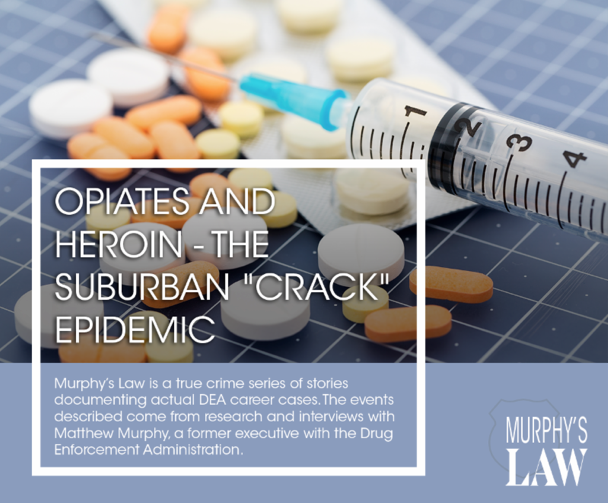My career with the Drug Enforcement Administration began in the summer of ’85 as a Special Agent in the New York City Office. July temperatures that year reached ninety degrees; nothing record-breaking, but on a humid day in Brooklyn with heat rising from the pavement, it seemed like the entire city was hell’s kitchen. As we breached that apartment door to execute a search and seizure warrant for cocaine none of the team had any idea just how appropriate the term “hell’s kitchen” would turn out to be.
In addition to cocaine, we discovered a substance cooking on the stovetop. Rumors of this drug had recently begun circulating, but for me and the New York DEA office, this was our first seizure of the drug known as crack cocaine. It would not be our last and the devastation it caused by it would be unprecedented.
For years before the advent of crack, cocaine catered to an economic upper middle class and the wealthy. Users considered it “recreational” and “non-addictive” and they gave the narcotic glossy names like, Glitter, Snowflake, the White Ghost and the White Lady. People with less financial means saw the narcotic as something glamorous; a drug that could raise one’s social status…but price is king…and crack became a low cost substitute that at first seemed like a high-class solution.
Crack cocaine soon became an inner-city epidemic.
Although we still work to understand the nuances of crack addiction, we know it has ruined thousands of lives, cost the country millions of dollars and resulted in the thousands of deaths …including newborns who were delivered addicted. The ugly step-sister of the glorious White Lady…was Death.
Today, we face a similar epidemic; the parallels are unsettling, the devastation familiar. The tipping point: not an old stovetop in a rundown city apartment, but the clean, glimmering medicine cabinets of suburban America.
The CDC has labeled opiate addiction an epidemic.
Opiate addiction didn’t set its roots in the party-minded population, nor the drug cartels looking for a new revenue source. Opiate addiction began from a place of best-intentions; to help the user manage unbearable pain in the form of legal prescriptions, provided by legitimate prescribers. By 2012, 2.1 million Americans were suffering from substance abuse disorders related to opiates. And as the nation reacted by closing down the supply, tightening controls, and instituting stricter standards, opiate abuse became an unforeseen gateway to heroin addiction.
Like crack cocaine, addicts who can’t get or can’t afford opiates have found a lower cost, more readily available alternative. And like crack, the devastation, the ruined lives, and the death toll are all rising. The similarities are alarming: a recreational designer drug and a doctor prescribed “safe” medicine that opened the gates to the darker corners of street narcotic addiction. The five-dollar crack “rock” has been replaced by the five-dollar bag of “H”.
But there are differences too.
Crack was an Inner-city “problem.” It was a problem for the drug user who shifted from coke to crack. It was also a problem that didn’t make its way to the suburbs on such a grand and public scale. Opiates and heroin are different. The user; a patient, or someone’s kid who thought “if it’s in Mom’s medicine cabinet how dangerous can it be?” It’s an epidemic that doesn’t obey geographical lines…or social…or economic. And more importantly, most of these “new” heroin users didn’t start-off with the intentions of using such an addictive, deadly drug. They began with something that was prescribed by a doctor and as such, they believed it to be safe.
It’s difficult to find hope in the current situation. If we can glean anything from the past, it is that addictions don’t fade; they recede from public view and are transferred to new venues. Heroin was once replaced by crack, then crack was replaced by meth, meth by opiates, and today opiates have returned us to heroin.
But again, today’s problem is different. The gateway is something we can have some influence over. We can use sound practices, DEA compliance education, and even regulation to ensure the next pain-management patient doesn’t become the next heroin addict.

